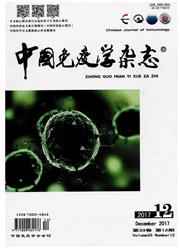

 中文摘要:
中文摘要:
目的观察大鼠心力衰竭过程中外周血调节性T(Treg)~胞的变化规律并探讨其意义。方法采用腹主动脉缩窄法制备大鼠心力衰竭模型,定期应用流式细胞术检测实验大鼠外周血CD4’CD25Yreg/CD4VY和CD4+CD25+F0xp3叮reg/CD4+T细胞的比例。结果①大鼠经腹主动脉缩窄术处理8周时,心功能明显下降,心衰模型建立成功。②在腹主动脉缩窄术处理4周、8周时,心衰组大鼠外周血CD4’CD25+Treg/CD4+T和CD4+CD25+Foxp3叩reg/CD4CF比例较同期sham组明显降低(P〈0.05);在处理12周、16周时,其比例与sham组差异无统计学意义(P〉0.05)。结论心衰发病过程中Treg细胞明显下调。Treg细胞可能成为心衰免疫调节治疗的新靶点。
 英文摘要:
英文摘要:
Objective To investigate the changes and significance of regulatory T(Treg) cells in rats with heart failure (HF). Methods Heart failure in rats was induced by constricted the abdominal aorta. The percentage of the peripheral blood Treg was detected by flow cytometry. Results In HF group, the percentage of CD4+CD25+ Treg and CD4+CD25+Foxp3+Treg in peripheral blood were considerably decreased as compared with sham group in rats at 4 and 8 weeks after treatment (P〈0.05). Then, the percentage of the peripheral blood CD4+ CD25+Treg and CDg+CD25+Foxp3+Treg were no significant differences between HF and sham groups (P〉0.05). Conclusion In rats with HF, the peripheral CDg +CD25 +Treg are reduced, and their functional properties compromised. Treg cells may become a new target for immunotberapy in heart failure.
 同期刊论文项目
同期刊论文项目
 同项目期刊论文
同项目期刊论文
 期刊信息
期刊信息
